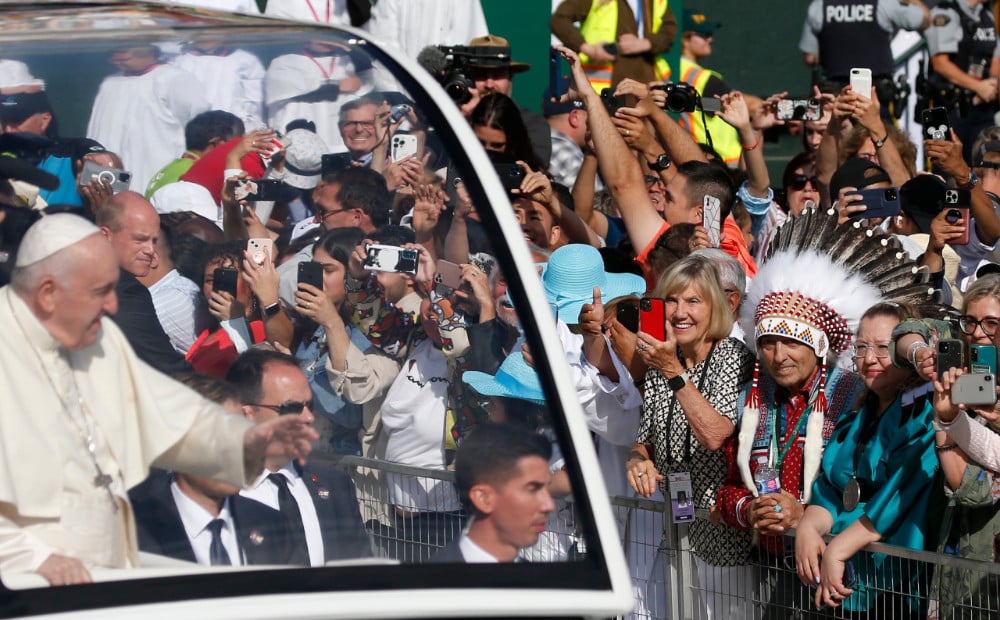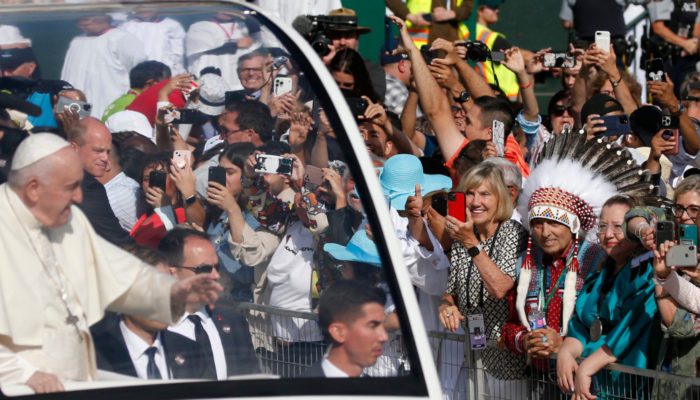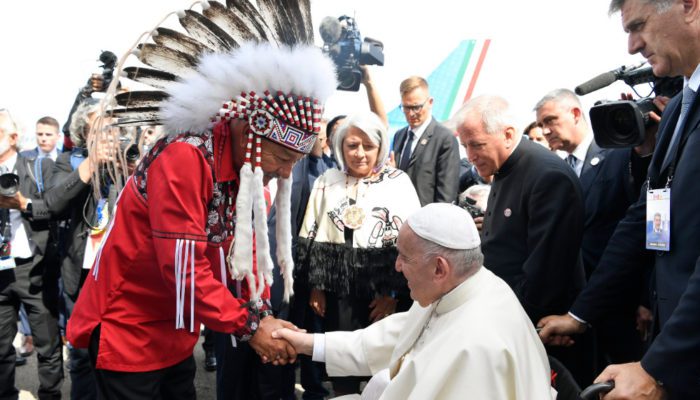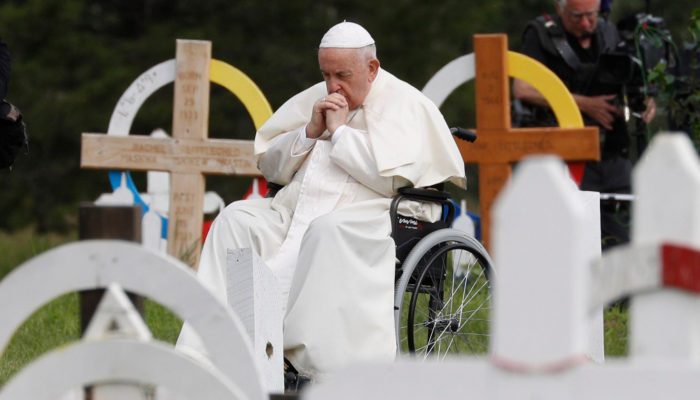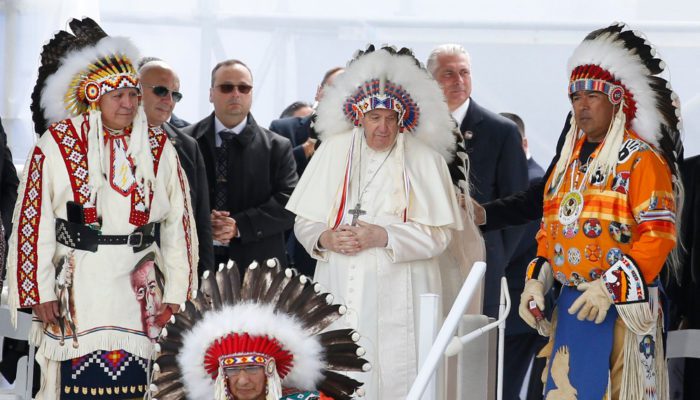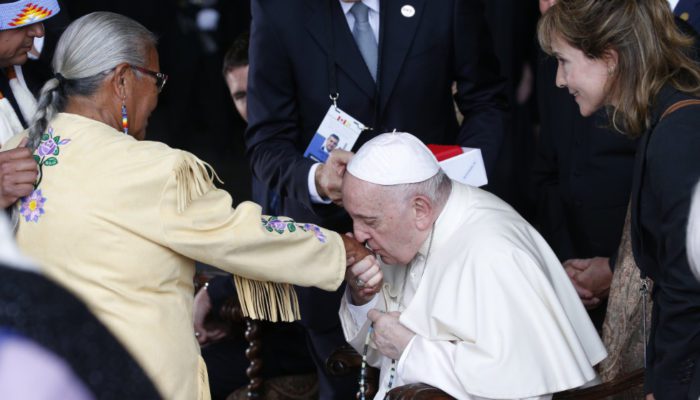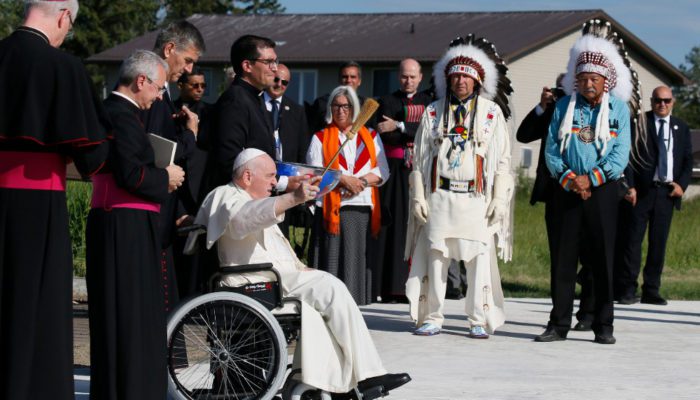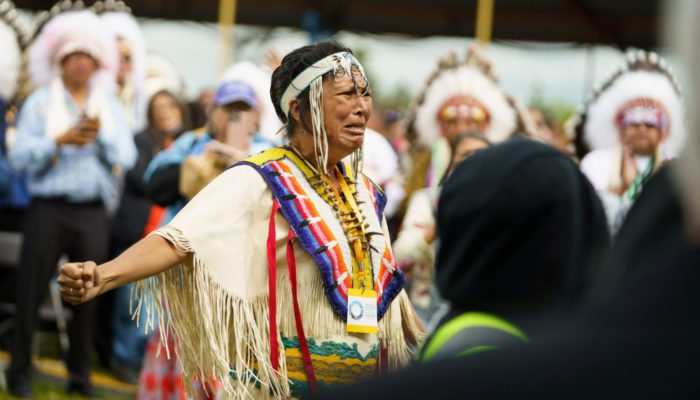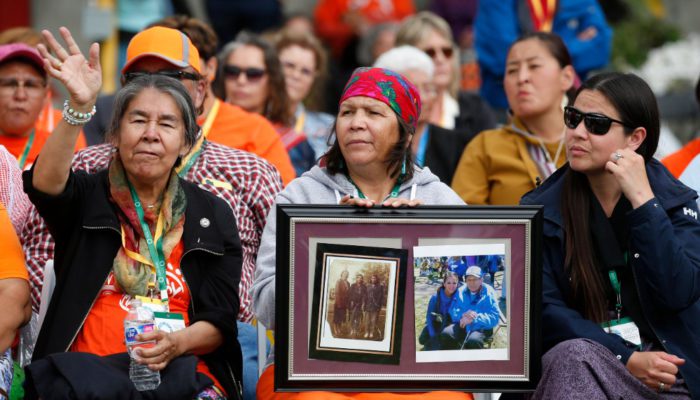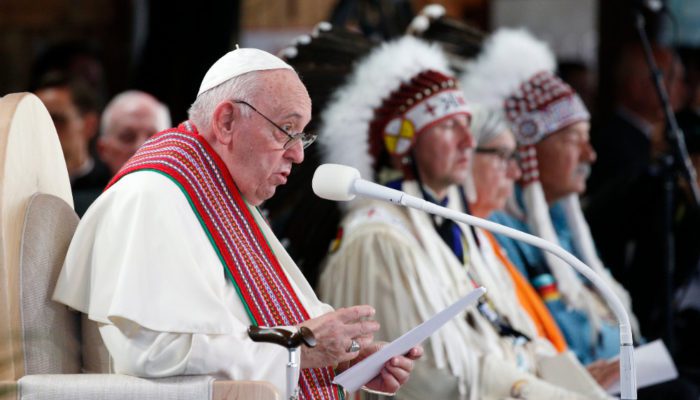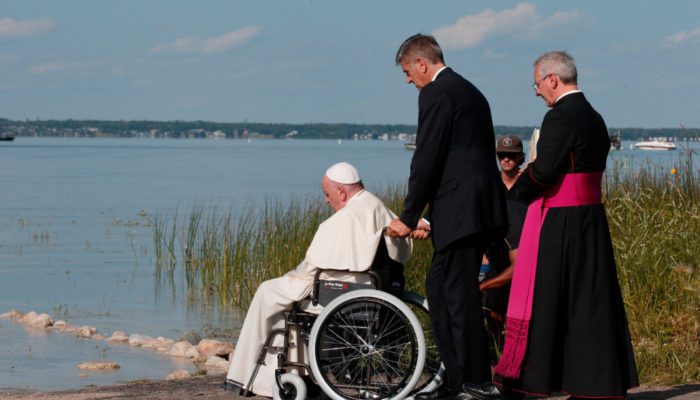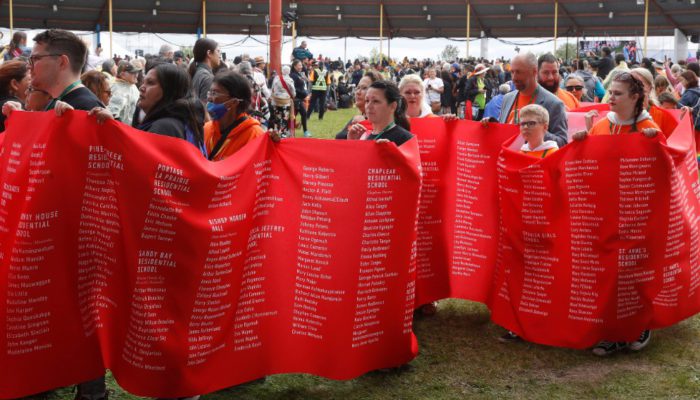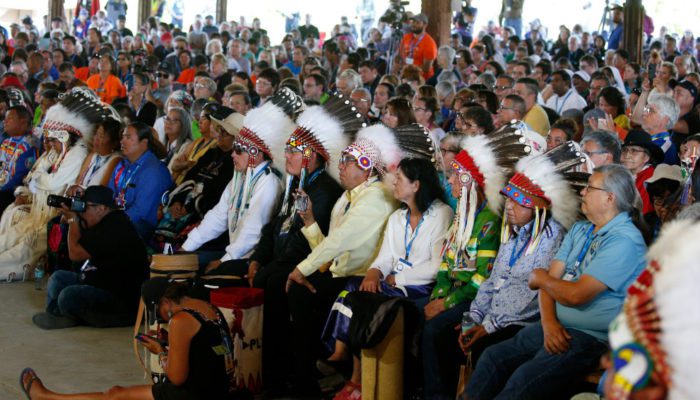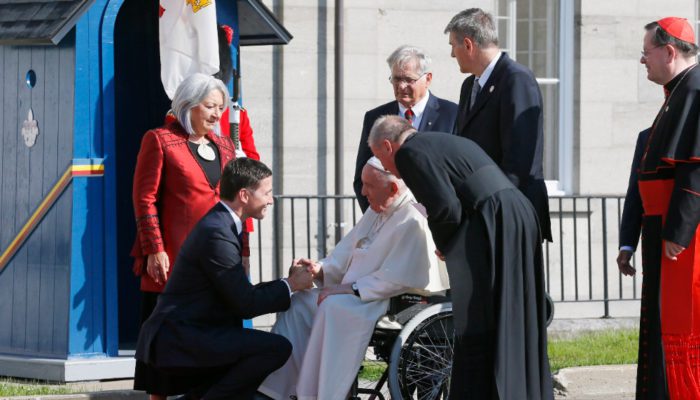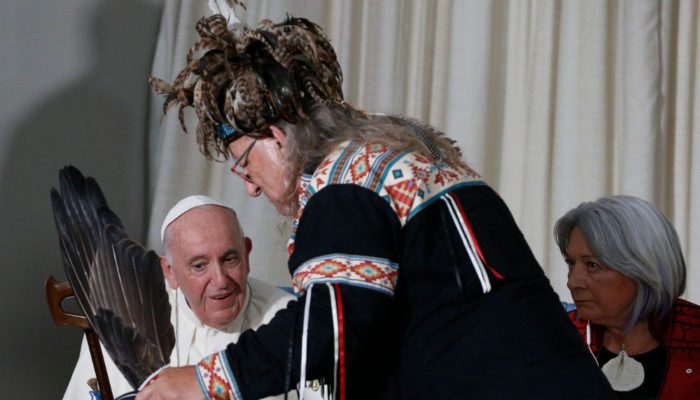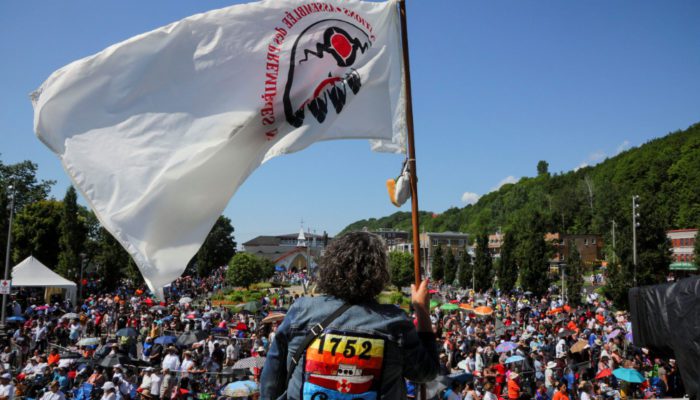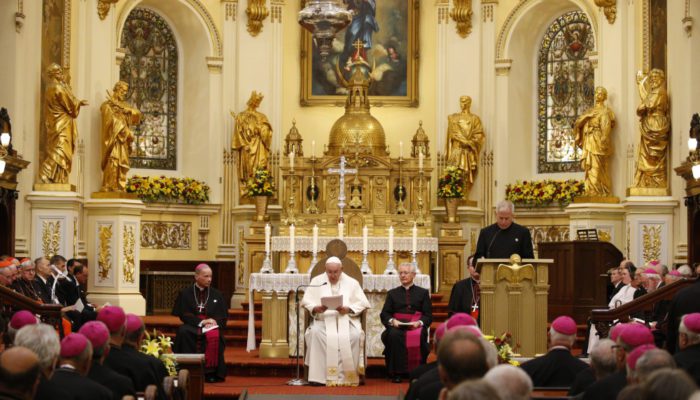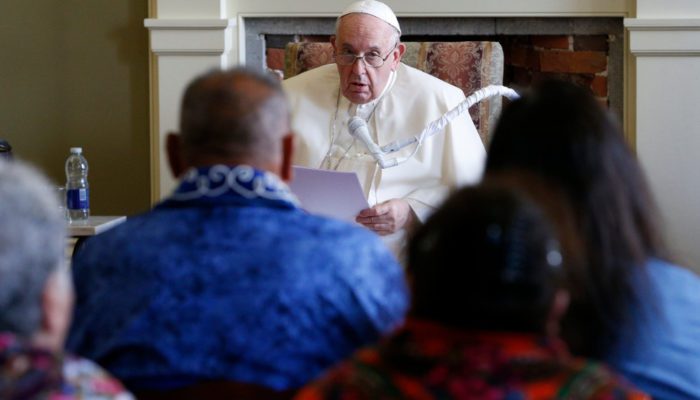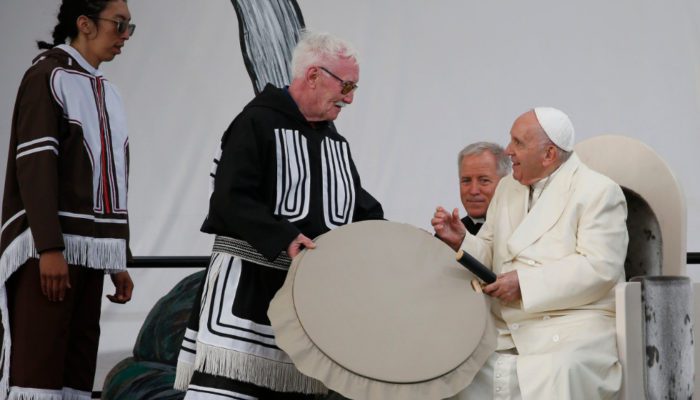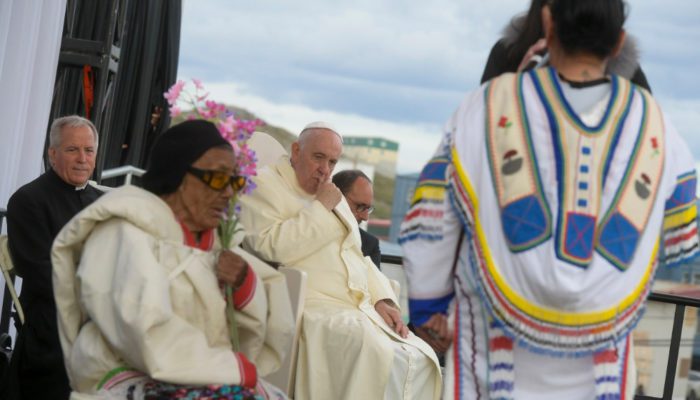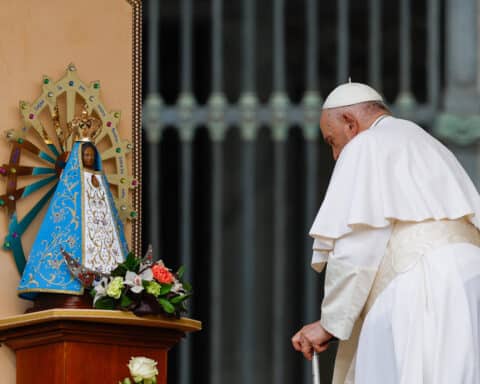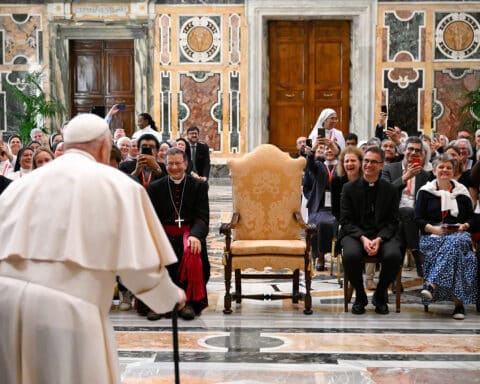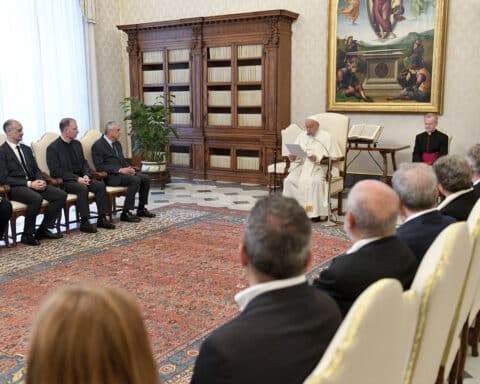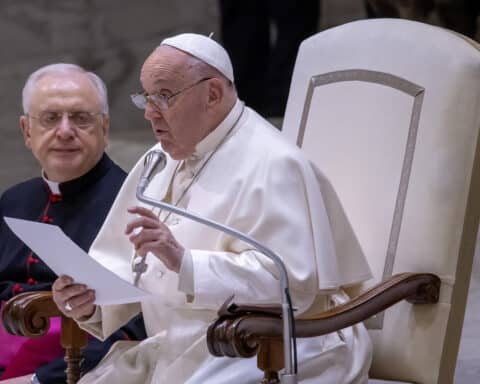After many months of waiting, Pope Francis arrived in Canada on July 24 for his “penitential pilgrimage” to meet with, listen to and apologize to members of Canada’s First Nation, Métis and Inuit communities, especially those who experienced abuse or attempts at forced assimilation at Church-run residential schools. After a flight of more than 10 hours from Rome, Pope Francis landed in Edmonton, Alberta, and met briefly at the airport with Indigenous leaders, Canada’s governor general and prime minister before heading to the local seminary for a rest.
The following day, Pope Francis met with more than 2,000 residential school survivors, community elders and knowledge keepers, their family members, and mental and emotional support staff. On the treaty land of the Ermineskin Cree Nation, Samson Cree Nation, Louis Bull Tribe and the Montana First Nation, near the former site of one of Canada’s largest residential schools, Pope Francis apologized for the wrongs committed to their ancestors at the hands of the Church. Later that day, he visited Edmonton’s Sacred Heart Church of the First Peoples, the first officially designated Indigenous parish in Canada.
On July 26, the feast of Sts. Joachim and Ann, the grandparents of Christ, 60,000 people gathered for Mass in Edmonton’s Commonwealth Stadium. Priority for the free tickets was given to First Nation, Inuit and Métis survivors of residential schools and elders, but the liturgy was the first event of the pope’s July 24-29 visit to Canada that was not focused almost exclusively on the Indigenous communities. Pope Francis wore a beaded cope made by Indigenous artist Julia Kozak, who had also created a beaded miter and chasuble for the occasion. While he was not the main celebrant for the Mass due to knee pain, Pope Francis delivered the homily, during which he urged people to honor their elders and to think about what they will hand on to future generations. After the Mass, he joined Indigenous pilgrims at Lac Ste. Anne, which is known for miraculous healings. Near the lake, the pope stopped to pray and bless the water, which bishops have done for decades at the start of the annual pilgrimage. Organizers said about 10,000 people were at the papal event.
During the second stretch of his trip, Pope Francis met formally with Canadian government and cultural leaders on July 27, namely Mary Simon, Canada’s governor general, and Prime Minister Justin Trudeau, who thanked the pope for his apology and noted that the Canadian government and all Canadians also have a role to play in the ongoing process of reconciliation with their original inhabitants of the land.
On July 28 at the National Shrine of Sainte-Anne-de-Beaupré, Pope Francis again delivered the homily at a “Mass of Reconciliation,” where he spoke about how the Church cannot flee from past failures but must reconcile with the Indigenous peoples. The following day, the last day of his trip, the pope met with two more groups of Indigenous survivors of residential schools in Canada, one from Eastern Canada in Quebec City and another in Iqaluit, Nunavut, in the Canadian arctic, where he again offered his apology.
Pope Francis’ “penitential pilgrimage” will likely be remembered for a few short words: “I am sorry. I ask forgiveness.”

